This blog post is the third installment of our Black Friday Checklist series. Keep an eye on our blog for new tips and insights each week, as we count down to the biggest shopping event of the year!
In the past, Black Friday shoppers endured some pretty terrible shopping experiences to get their hands on the best bargains. Overnight lines for a 5am stampede, anyone? With the accelerated shift to ecommerce, Black Friday is now a much more civilized event. Online shoppers have high expectations. They no longer tolerate website crashes, inaccurate stock levels, or glitchy checkouts. In fact, today’s ecommerce customer demands an utterly effortless shopper experience in the form of personalized shopping experiences.
Why You Need to Personalize the Black Friday Shopper Experience
The competition for shoppers’ attention is at an all-time high in the lead-up to Black Friday. Customers are bombarded with ads, offers, and emails from all sides. Most quickly become immune to generic sales communications. To stand out, your messaging needs to be on point and hyper-relevant to each individual customer.
Research shows that:
- 91% of consumers are more likely to shop with brands that provide relevant offers and recommendations
- 80% of consumers are more likely to make a purchase when brands offer personalized experiences
- 71% of consumers say they expect companies to deliver personalized experiences, and 76% get frustrated when this doesn’t happen
How to Personalize Black Friday Shopping
Curate a customized shopper experience this Black Friday with these four tactics.
1. Personalized Recommendations
The barrage of Black Friday offers can quickly become overwhelming for shoppers. Too much choice isn’t necessarily a good thing, so leverage personalized recommendations to surface the products a shopper is most likely to buy. From recently viewed products displayed on the homepage, to last-minute suggestions at checkout, deploy recommendations on a site-wide basis. Show more of the brands, colors, and styles that the shopper is interested in, and cross-sell on product pages to drive up average order value. With an intelligent personalization solution, your site learns from shopper behavior, and generates recommendations in response.
The following example shows how Lulus.com uses historical data and items in the shopper’s cart to recommend black dresses with a slit or embellished sleeves.
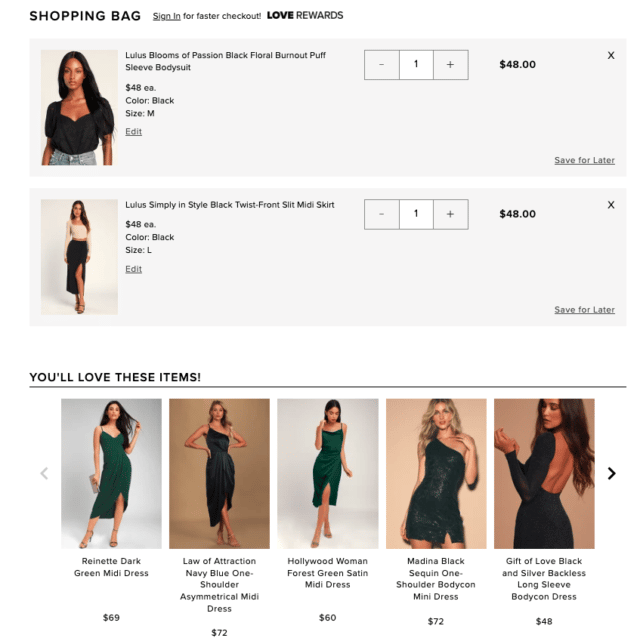
2. Personalized Search & Merchandising
Don’t overlook the power of your search bar this Black Friday. Shoppers who search have a high intent to purchase, but only if they find the right results. Personalized search identifies the products that match your customer’s preferences and boosts them to the top of the search results page. The same product results appear for every user, but personalization means they are displayed in an order that makes sense for the individual customer. Shoppers see more of what they love, and they don’t have to scroll endlessly to find what they’re looking for.
In the following example on Peltz Shoe’s site, a simple search for “boots” could display women’s, men’s, and children’s boots. However, thanks to Personalized Search, the site knows that this user is more likely to be interesting in women’s boots.
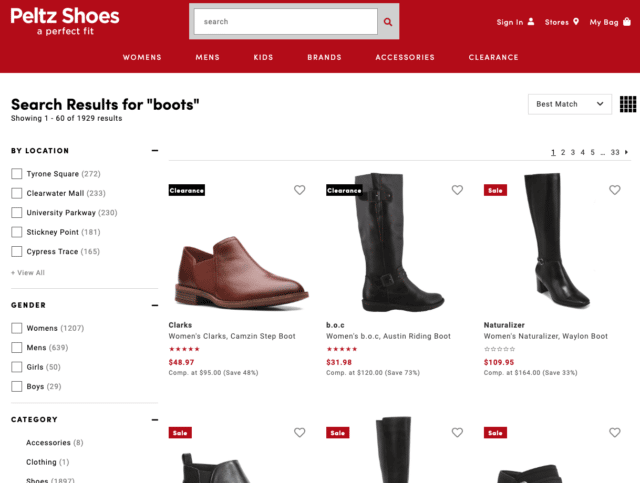
3. Geo-Merchandising
User behavior isn’t the only way to predict a shopper’s preferences. Location has a strong influence on what a customer is most likely to buy, which is where geo-merchandising comes into play. Personalize products, messaging, and promotions based on where the customer lives to deliver hyper-relevant results. Sell sports goods? Target website visitors with merchandise for their local team. Specialize in gardening products? Tailor your site experience to the customer’s climate or growing zone. Even before the shopper begins to interact with your site, geo-merchandising instantly personalizes their experience.
Ruggable uses geo-merchandising to determine where and when to feature outdoor rugs. The first image shows outdoor rugs predominately displayed on their homepage well into September because they know the shopper is located in a warm-weather state. The second image shows what a shopper in a cold-weather state sees. The same spot on Ruggable’s homepage that features outdoor rugs to warm-weather shoppers, instead displays the variety of texture they offer to those who live in states that are starting to experience temperature drops.
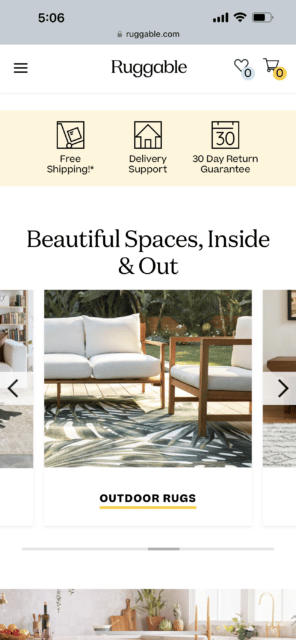
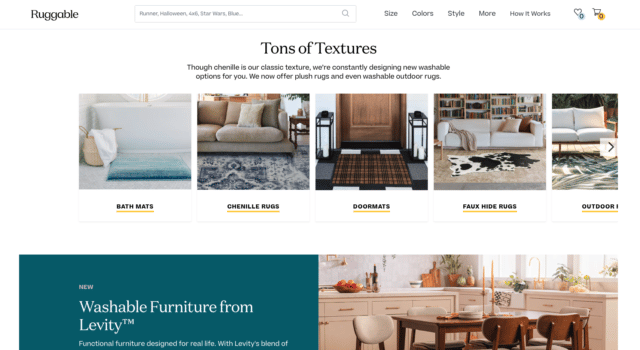
4. Personalized Email Recommendations
Personalized email recommendations give you the power to customize the buying journey beyond your website. From abandoned cart reminders to order confirmations, dynamically populate your email campaigns with relevant products based on previous shopper behavior. Engage with your shoppers across the entire customer lifecycle and keep them coming back for more. Not only do personalized email recommendations entice shoppers pre-Black Friday, they’re also the perfect way to boost loyalty post-Cyber Weekend, so you can turn seasonal shoppers into repeat customers.
This email dynamically picked products for the email based on previous purchases by the shopper. Knowing what the customer likes makes them more likely to click-through and, not only add these products to their cart, but shop around and add more.
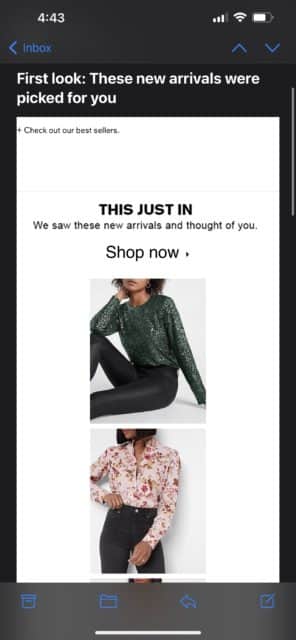
Personalize Every Step of the Black Friday Shopping Experience
To succeed this Black Friday, focus on getting the right product in front of the right shopper at the right time. Customers expect more than a transactional experience. Personalized buyer journeys are now a must, as shoppers actively seek out ecommerce stores that respond to their preferences. Ready to get started? Searchspring’s personalization suite equips retailers to tailor product recommendations, search results, and email content to each individual customer. Contact us today to see it in action.
For even more Cyber Weekend tips, make sure to check out our Black Friday Webinar Series!





